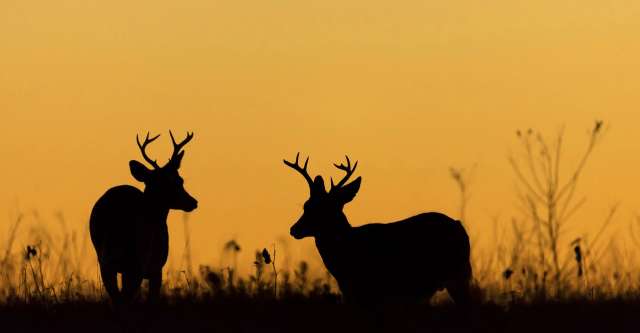Officials are concerned that the rapidly spreading Chronic Wasting Disease (CWD) will one day threaten the health of humans. Right now it has never been proven that humans can be infected by CWD, although some research suggests that it is possible.
A Spreading Disease
Chronic Wasting Disease is nicknamed “zombie deer disease” and gets its name for the symptoms the animal displays. These symptoms include stumbling, listlessness, boils, droiling, and rapid weight loss. The disease is deadly, degrading the animal’s brains, spine, and body after it has been infected.
Although so far there have been no cases of CWD in humans, recent research shows that a human getting the disease isn’t as unlikely as we think. Centers for Disease Control and Prevention (CDC) said that the disease has been reported in deer, elk, and moose in over 200 counties across the United States. The condition is mainly in the midwest, but it has been found in two Canadian provinces.

Could it Affect Humans?
CWD is still primarily uncommon but infection rates among deer and elk in places where the disease is common have been reported at 10-25%. [1] CDC asserts that captive deer have a higher rate of CWD.
Michael Osterholm, director of the Center for Infectious Disease Research and Policy at the University of Minnesota told Minnesota legislature earlier this month that CWD is a possible human threat. “It is probable that human cases of chronic wasting disease associated with consumption with contaminated meat will be documented in the years ahead,” Osterholm said. “It’s possible the number of human cases will be substantial, and will not be isolated events.”
Unfortunately, officials don’t know much about CWD and whether it can spread to humans or not.
Steven Rinella, a wild game cookbook author who operates the MeatEater Podcast and the Netflix television series was unamused by a recent flood of media headlines warning of the “zombie deer.” “Thankfully no one has ever contracted the disease from eating CWD-positive venison, but I’d love to have a crystal ball to see if that’s still the case or not in 25 years,” said Rinella, who gets his animals tested after hunting in infected areas. “The uncertainty is tough.” [2]
Avoid It
Many states provide locations where hunters can drop off the heads of their deer to have them tested for CWD. Reffering to deer, elk, or moose, the CDC “recommends that hunters strongly consider having those animals tested before eating the meat.”
Hunters should also be careful to avoid shooting or handling animals that look sick or animals that were found dead.
Notes:
- ^“Occurrence | Chronic Wasting Disease (CWD) | Prion Disease | CDC.” 13 Feb. 2019, www.cdc.gov/prions/cwd/occurrence.html. (go back ↩)
- ^McCausland, Phil. “Hunters say it’s not a ‘zombie disease,’ but they are worried about deer illness.” NBC News, 18 Feb. 2019, www.nbcnews.com/news/us-news/hunters-say-it-s-not-zombie-disease-they-are-worried-n972476. (go back ↩)

